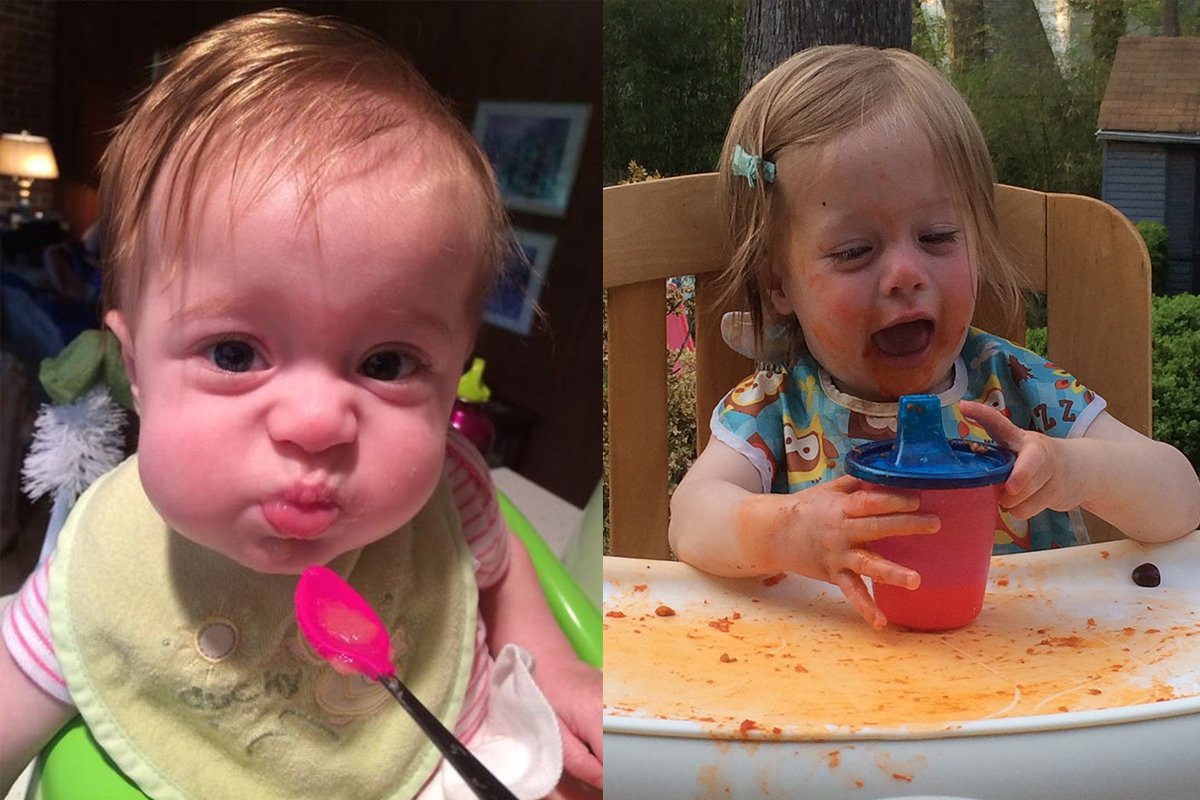Taking Out the Guess Work: How, What and When to Feed Your Baby

Many parents have a shared experience when it comes to transitioning their babies from milk or formula to solid foods.
Food seems to end up everywhere.
Mom of four and Burnesser Elizabeth Wenk (whose adorable daughter is pictured above) has plenty of memories of her children taking food and throwing it on the ground. She and her husband would joke about needing to get a dog to help clean up the constant mess.
“I remember many, many days when a lot more food ended up on the ground than in our children’s mouths,” Elizabeth said.
She thinks feeding children is always a struggle, especially when they are little.
“You hear many mixed messages,” she said, “whether it's from friends, your own mother or what you see on TV about what kids should be eating.”
Currently, the federal government’s dietary guidelines don’t include instructions for infants and toddlers under 24 months.
That’s why Healthy Eating Research convened a panel of experts to create a dietary guide for infants and toddlers.
The report includes tips on what and how to feed infants and toddlers, information on food allergies and food safety, and guidelines for physical activity, sleep and regulating television and other screen time (including iPhones!).
Here are some key points that might be helpful—and surprising—for new parents:
Eat well while you’re pregnant and breastfeeding. Healthy eating during pregnancy and while breastfeeding, including consuming plenty of vegetables and fruits, will help shape your child’s preferences for healthy and nutritious food later on.
Don’t give your baby cow’s milk. Cow’s milk should NOT be offered before the child turns one year old because it may cause intestinal bleeding.
The bottle is for breast milk or formula only! Though previous generations thought this was a good idea, you actually shouldn't add baby cereal to the milk in your baby’s bottle. This practice will not improve the sleep of your baby at night, and it may interfere with how well nutrients in breastmilk or formula are absorbed.
Your baby will let you know when they’re ready for solids. When your baby is between four and six months old, pay attention to their developmental signs to find out if they're ready to start eating solid food. Signs your baby is ready include sitting up unsupported, munching and chewing food, and the ability to swallow food, grasp items, and bring food to their mouth. If your baby pushes solids out with their tongue when food is offered (thrust reflex), or gags when a spoon or food is placed in their mouth, then they’re not yet ready to be introduced to solid food.
Sugary drinks are a no-no. It is strongly recommended to offer no sugar-sweetened beverages such as flavored drinks (including Kool-Aid, fruit drinks, sodas, horchata, sports drinks and sweet tea) to your baby during the first year of life. Doing so could reinforce your baby’s strong preference for sugary food and beverages and make it more difficult for them to learn to like healthy food such as vegetables, fruits and plain water.
While the guide probably won’t solve the universal parental problem of food on the floor, it’s a great resource for new parents who are learning the ropes of infant and toddler nutrition.
Check out the full guide here, and share with your new parent friends!